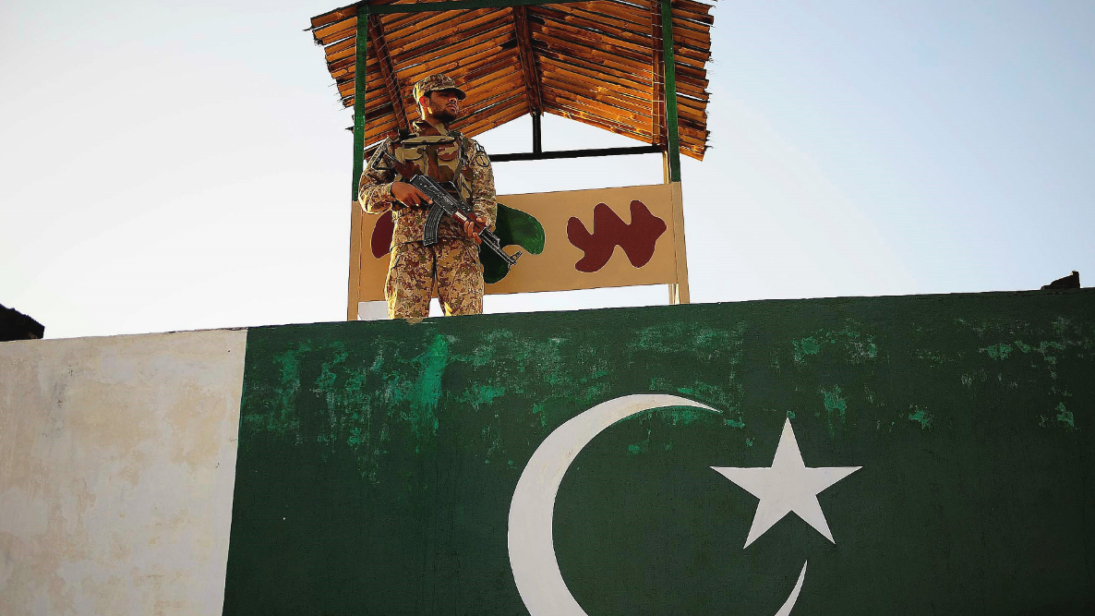
South Asia has remained a focal point of U.S. foreign policy, particularly since the Afghan War in the 1980s. The superpower has fought two wars in the region; one through proxies and the second directly. In both wars, Pakistan was a key ally. The country provided the United States strategic, political, and military support in exchange for economic and defense assistance. This roller coaster relationship has oscillated between friendly and tense relations. Both sides have faced significant losses of blood and treasure. However, at the same time, a lack of trust is evident. The states stand far apart on a number of issues – especially at the grassroots level.
A critical question arises here: despite all the issues, why is the United States still interested in Pakistan and Afghanistan? Why is it ready to take risks despite negative indicators? These questions can be answered through the lens of Prospect Theory. This theory, which is not originally from political science, contains elements that can explain the behavior of the United States with regard to its relations with Pakistan and Afghanistan. It provides insight into the psychological aspects of decision-making by states and their political leaderships.
Prospect Theory: An Introduction
Prospect Theory, rooted in the field of economics, was first introduced by David Kehneman and Amos Tversky in 1979. It mainly focuses on decisions being taken in high risk situations and suggests that individuals tend to take risky decisions in situations where the chance of losing is higher than the chance of gaining. The basic assumption of Prospect Theory is that “individuals are cautious in their decision-making (that is risk averse) when facing favorable prospects (gains), but tend towards bold decision-making (risk acceptance) when confronting threats to their well-being (losses).”
The fundamental idea of the theory confers that individuals and, in the case of international relations, states mostly opt to maintain the status quo. It is because the fear of loss is far higher than the expected gain. It further posits that individuals and states take high risks during a loss situation while in scenarios where the expectations of gain are high, they will be risk averse.
In U.S. foreign policy, two important case studies of former presidents can be analyzed using this theoretical approach. In her work, McDermott discusses the decision-making of Presidents Eisenhower and Carter. During his term, Jimmy Carter decided to initiate a highly risky operation aimed at freeing hostages being held at the U.S. embassy in Iran. Similarly, President Eisenhower refused to accept the blame of espionage following the U-2 incident involving the Soviet Union. McDermott examines the decision-making of both presidents by taking different sources, such as interviews, to gauge the relative riskiness of each option. She utilizes risk-propensity as her dependent variable in order to look at decision-making choices. Her results were in line with the propositions of Prospect Theory, supporting its rational application in international relations. That is – Carter undertook a risky operation because the odds were against him, and Eisenhower lied because it was strategically important situation for the United States.
Operation “Kill bin Laden”
A critical incident in the Pakistan-United States relationship was the May 2011 U.S. Navy SEAL operation to kill Osama bin Laden. Keeping in mind that both countries were allies in the War on Terror and were cooperating in the military and intelligence sectors, this operation on Pakistani soil was a high risk step for the U.S. government. The Pakistani government and military leadership were not informed in advance and only came to know of the operation when President Obama announced the killing of Osama bin Laden, calling it “the most significant achievement to date in our nation’s effort to defeat al Qaeda.”
The Bin Laden operation was one of the most risky steps in War on Terror. The hunt for the al Qaeda leader was one of the War on Terror’s primary goals. Both the United States and Pakistan had piled economic and military resources into this war. This operation seems to be a non-cooperative, untrustworthy step taken by the United States against its ally. It certainly raised issues of trust and anger among the Pakistani authorities. Relations were shaken and anger erupted among the Pakistani masses, further harming the United States’ image in the country.
The question is: “Why did the United States opt for this risk despite the potential downsides?” It can be argued that bin Laden had been a hard target for the United States for the previous 10 years, the War on Terror started because of him and he had cost the United States lives and money. Furthermore, the U.S. withdrawal from the region was drawing nearer and without getting bin Laden it would have appeared as if the decade-long effort was futile. It would certainly have affected the image of the United States as a superpower in the international community. All these factors, according to my understanding, led the U.S. government to launch an operation and kill Osama bin Laden, even though it meant going inside the territory of its close ally without officially informing it.
Conclusion
Since the Afghan War in 1980s, U.S. foreign policy has remained focused on the region. Although the superpower has gained strategic and economic benefits, the losses have been greater (billions of dollars, over 2,000 military personnel, and prestige). The question arises: why has the United States continued to take risks in the region? Prospect Theory gives an answer. The United States continues to take risks in the region because it is at a disadvantage.
***


